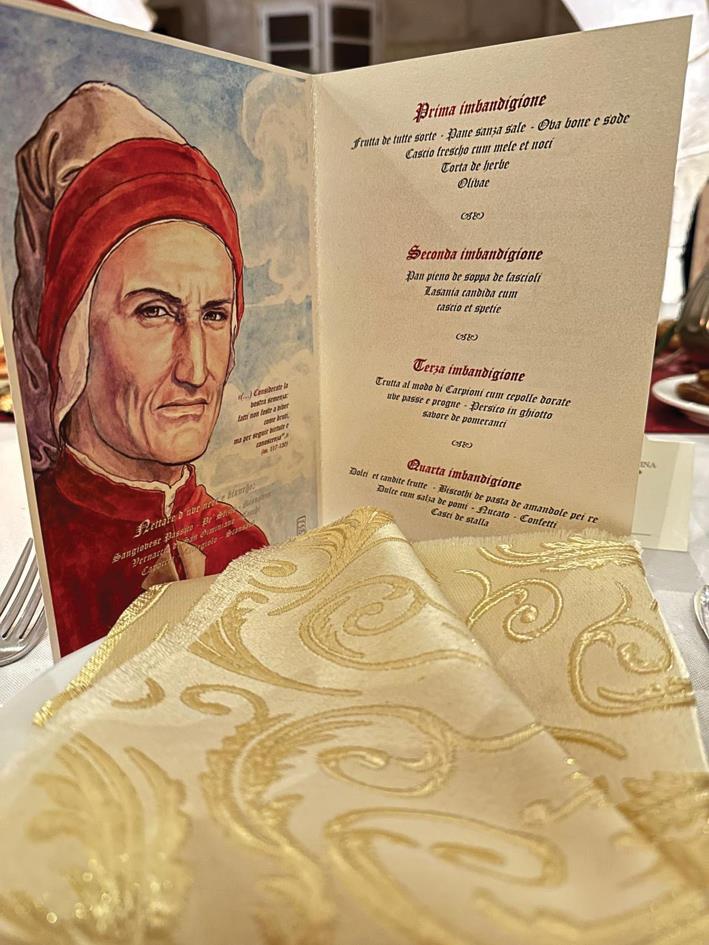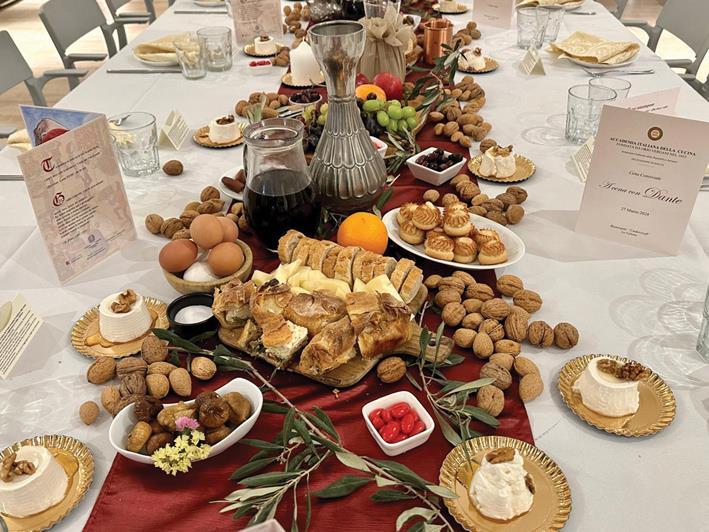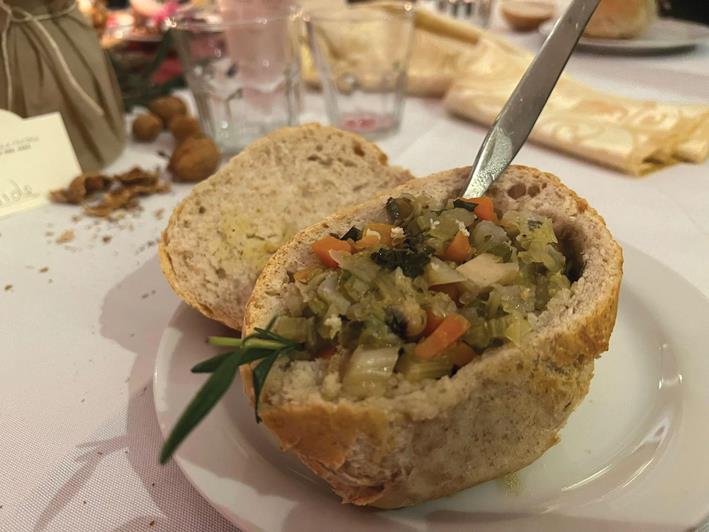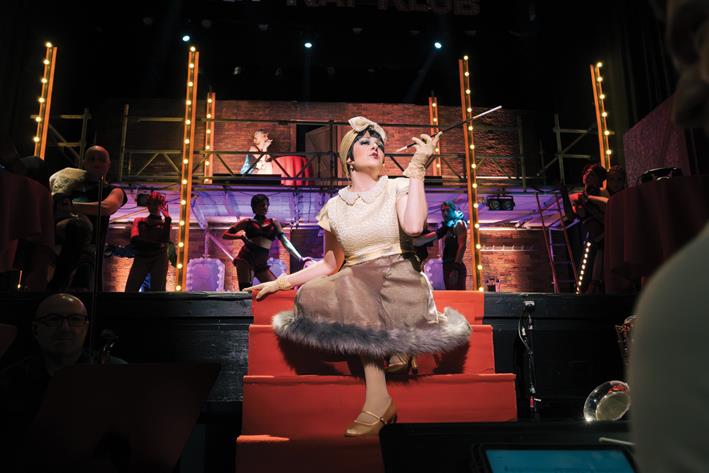During Dante's time, which was the late Middle Ages in Italy, the diet was influenced by several factors such as geography, climate, faith, politics, and technology. Or so I am told by the internet. "The common foods would have included a variety of breads, meats like rabbit and poultry, and fish for those near the sea or rivers. Vegetables such as onions, garlic, and herbs like parsley and thyme were also part of the cuisine. People of higher social status might have enjoyed more elaborate dishes with spices that were expensive at the time, while the lower classes ate simpler meals." The diet was also characterized by the preparation of food that required more time and labour to access and consume compared to modern standards.
It's important to note that the food culture then was deeply intertwined with social and religious practices, and what was consumed often reflected one's social status and the seasonal availability of ingredients.

So, the evening of the banquet to celebrate Dante arrived, organised by the indefatigable and super-organised boss of the Accademia Italiana della Cucina, the branch in Malta, Massimiliana Tomaselli.
The big hall of the Undercroft restaurant, under St Paul's Cathedral in Valletta, with its arcades was the theatre of the celebration of Dantedi on these islands. The event which took place under the patronage of the Embassy to Italy and in collaboration with Fondazione Italiani.it and Costantino Films has been dedicated to "Durante degli Alighieri", known as Dante, and to the period in which he lived. Together with his well-known greatness, the Supreme Poet is the unusual image of a Dante who was little inclined to the pleasures of the table in the 14th century. He punishes all those who stain themselves with the capital sin of "Greed" putting them unceremoniously in the third circle of hell. That is where Dante and Virgil found the souls of gluttons; people who indulged in excessive eating and drinking. Gluttony in La Divina Commedia, succeeds "Lust" as it is self-centred and therefore considered much more wicked.
What would he have said to the splendid banqueting table that evening, decorated so beautifully with fruits, flowers, nuts, ġbejniet with honey, breads and so much more. I also noticed the napkins were very special, embroidered in golden thread.

The menu for the evening was authentically medieval whether in the preparation of selected dishes being made agreeable with spices and also in the rigid order they were presented as demanded by medical science, at the time. The Lenten period also made its demands, probably much more strict then than now as to what could be eaten. I will leave the photos to do the talking.

The entremets, the little treats between courses, took the form of medieval music, a central feature of medieval banquets. Ministrels, skilled entertainers and musicians held a prominent place in medieval society. They wandered from feast to feast, recounting tales of heroes and legend, playing musical instruments and captivating audiences. Their repertoire included ballads, chansons and instrumental music. That evening it was left in the hands of musicians who were colourfully dressed in Medieval costume. These were members of the cultural organisation, Mastrogiurato di Lanciano.

Giovanni Costantino read out excerpts from La Divina Commedia, as part of the entertainment. There was much eating and drinking and talking, too. There were 60 of us at that banqueting table. Later, the event was concluded with the conferment of the title of "Accademico" to four candidates who had reached the required high standards. This was in the able hands of the president of the Accademia, Massimiliana Tomaselli.

When England's Richard II threw a banquet in 1387, the shopping list included over 200 cows, 100 pigs, 1,000 sheep, 13 swans, 175 pigeons, deer, geese, and even porpoises, carp and seals... let us spare ourselves any further comments.
After much clapping and goodbyes, slowly we heaved ourselves from our chair, found our way to the street above and waited for our taxis. Mercifully, we did not have to drive home.

Please note that last week's selection of photos on this page are credited to Christine J. Muscat-Azzopardi.